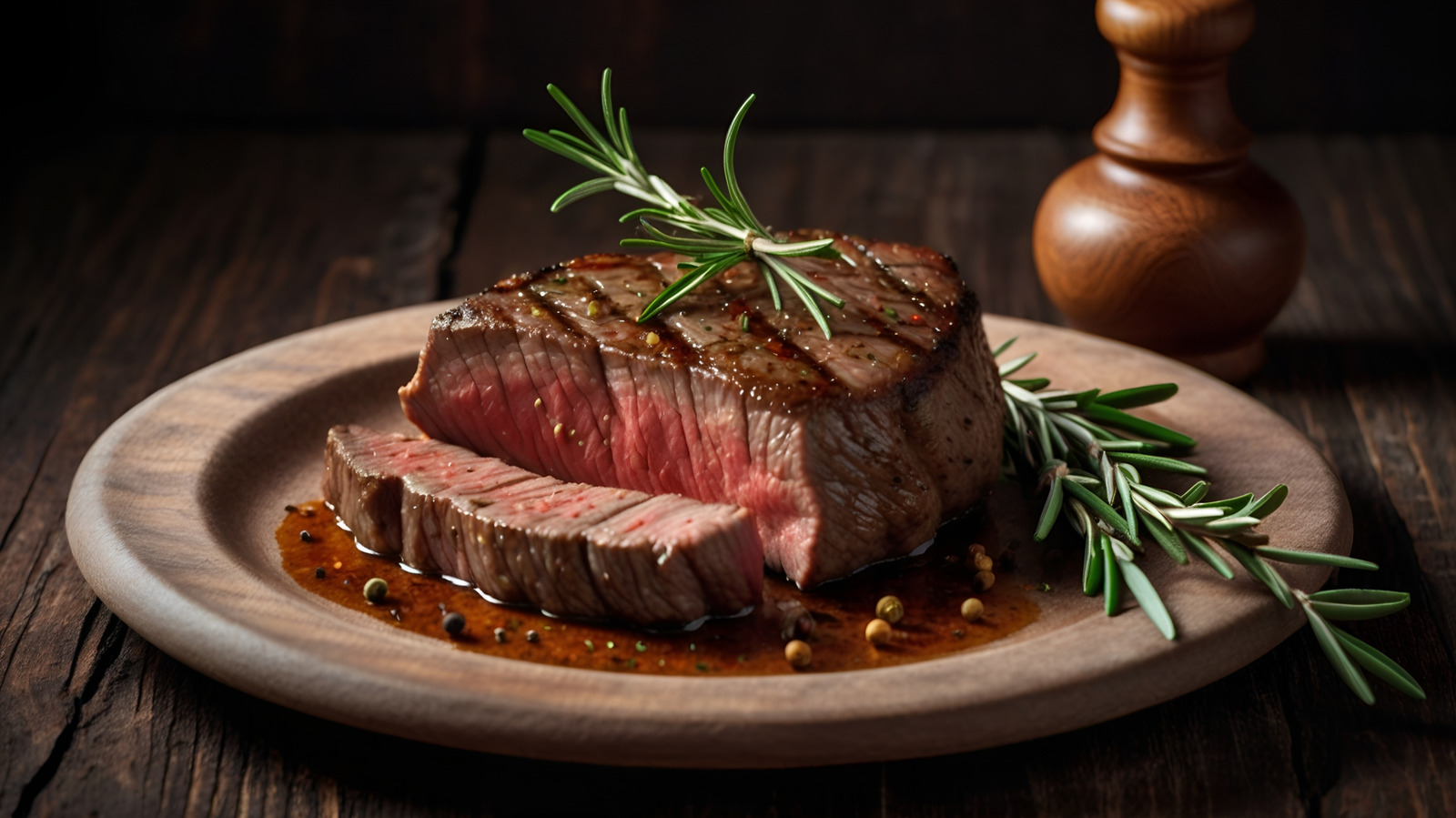We may receive a commission on purchases made from links.
One of the most common herbs grown in home gardens, rosemary has a reputation for being “that ingredient” … the one you see in recipes but never have the confidence to use yourself. Many people even have it on hand, right out the back door, and still never give it a go. It’s time to change that.
“There are so many ways to cook with rosemary,” says Shawna Clark, founder and creator of Healthy Foodie Girl. From roasted chicken, where it adds a beautiful depth of flavor, to root vegetables and bread, rosemary is heavenly, she says. “You can even throw a few sprigs into tomato-based sauces or soups to let the flavor gently infuse as it simmers. And don’t be afraid to strip the leaves off the stem and finely chop them for seasoning proteins or making compound butter. It adds that cozy, herby note that makes a dish feel complete.”
Enthusiasm for rosemary is nothing new. “Rosemary has a rich history, dating back to ancient Greece and Rome,” says Robert Smith, private chef at Culinary Collective ATL. “Today, we still cherish rosemary for its distinct flavor and versatility, elevating dishes from roasted meats to baked goods, while also benefiting from its antioxidant properties.” In other words, if you’re not already using rosemary in your cooking, what are you even doing? Here’s a comprehensive guide that will have you cooking with this delicious and fragrant Mediterranean herb in no time.
What is rosemary?
Rosemary (Salvia rosmarinus) is an evergreen herb related to mint, thyme, oregano, basil, and lavender. It is native to the Mediterranean, and like its herb cousins, it prefers the dry, rocky soil and sunny climes found there. Today, it is widely cultivated in North and South America, Europe, and Asia. Once planted in a temperate or Mediterranean climate, rosemary often establishes well and produces fragrant needles year after year, which are beloved for cooking, baking, drinks, and desserts.
Interestingly, rosemary was recently reclassified. While it was originally of the genus Rosmarinus, it is now in the Salvia genus. This happened in 2017, which just goes to show that botanists are always learning more about plants, their growing habits, and their relationships to one another.
A brief history of rosemary cultivation and use
“Rosemary has a long history tied to memory and preservation, which makes sense considering how fragrant and resilient it is,” says Marissa Stevens, founder of the recipe blog Pinch and Swirl. Some students in Ancient Greece even wore garlands of rosemary while studying. “We still love it today because just a small amount makes a big impact, and because it holds up so well to cooking and even grilling.”
In ancient times, rosemary was used not only culinarily or for health benefits but also for sacred purposes. It was used for embalming in Egypt and at memorials in Greece and Rome. “You’d find it in wedding ceremonies, healing rituals, and even tucked under pillows to ward off bad dreams,” Shawna Clark says. Although we might not use it to keep the bogeyman away anymore, she says, “There’s something nostalgic and grounding about rosemary that keeps us coming back to it.”
The flavor of rosemary
The sharp, pungent, yet balanced flavor of rosemary is its biggest commendation for cooking purposes. It has piney, earthy notes with hints of pepper, lemon, and even a touch of mint, says Renee Guilbault, CEO of Harry’s Famous, purveyor of the popular Rosemary Red Wine pasta sauce. This strong flavor does mean you have to be careful, though. “If used too generously, it can overpower a dish, rather than delicately enhancing it. With rosemary, a little often goes a long way.”
Marissa Stevens says you can take a few approaches to moderate the flavor of rosemary. Mince it finely and keep the amount small, or throw entire sprigs into the sauce or meat as it cooks, then remove them afterward; this leads to a gentler diffusion of flavor.
Why don’t more people use rosemary in their cooking?
As discussed, fresh rosemary is an ingredient that many amateur cooks are wary of. “I think a lot of people are intimidated by rosemary’s strong flavor and woody texture,” says Julia Chebotar, private chef and founder of Health Chef Julia, as well as Food Network’s “Chopped” Champion. “If you use too much, it can overpower a dish, and if you don’t prepare it right, like not chopping it fine enough, it can feel like you’re chewing pine needles.” When used properly, though, it adds a depth and warmth to both sweet and savory dishes that are hard to beat.
Moreover, says Shawna Clark, many people are unfamiliar with fresh rosemary. “Some people have only experienced it in dried form, which can be a bit woody and intense if not used correctly,” she says. However, once you know how to balance it, it becomes a staple, she says — especially in rich and savory dishes, where its flavor profile is a magic all its own.
Finally, Renee Guilbault adds, some people just don’t like it. It’s like cilantro in that way. An herb famously hated by both Ina Garten and Julia Child, cilantro is polarizing due to a flavor that is, according to some, soapy. Rosemary may simply be too overpowering for some folks. That said, a more likely explanation is incorrect exposure, says Jem Mantiri, recipe developer and food photographer at Jem Mantiri. If they’ve had an overpowering experience, they may simply not trust it: “It can cause them to not want to use rosemary at all since they might think that this herb is too strong.”
Available forms of rosemary
Buying good rosemary in the right form can help people build a positive association with its flavor, which is both delicious and delicate if used correctly. Luckily, you have lots of options. “Rosemary is found in a few forms at the grocery store,” says Gwen Wolken, founder of the food blog A Sweet Thyme. “You can find fresh sprigs in the produce section, dried leaves, or ground rosemary in the spices.”
If you’re lucky, you may also find infused oils. “I love using rosemary-infused olive oil for drizzling over roasted vegetables or as a dipping oil with bread,” Julia Chebotar says. If you can’t get what you want at the store, the internet has your back. For instance, you can find Mantova Grand’Aroma Rosemary Flavored Extra Virgin Olive Oil, fresh Amazon Grocery Organic Rosemary sprigs, or dried Simply Organic Whole Rosemary Leaf online.
How to choose the best herbs
If you really want that strong rosemary flavor to come through in your cooking, opt for fresh rosemary. “Fresh is ideal, and you’ll know it’s good if it’s firm, fragrant, and not shedding needles,” Marissa Stevens says. Other signs that the rosemary is good include a vibrant green color, a strong scent, consistent color, and stalks that stand up straight when you hold them stem-down. “Avoid any bunches that have a lot of moisture in the packaging, as this can lead to mold,” Renee Guilbault advises.
When choosing dried rosemary, you want to subject it to the scent test as well. “Dried whole rosemary should still smell piney and strong,” Jem Mantiri says. If you get a jar home and it smells like nothing, return it. She adds that “If you bought your ground rosemary a couple of months ago, it probably won’t taste as flavorful or strong. This is okay, but it just means you need to add more rosemary than what the recipe says.” Ideally, though, you want dried herbs that retain all the earthy, piney aroma of fresh rosemary, so buy in bulk if you can. That way, you can test the scent before purchasing.
Common uses for rosemary in cooking
There are so many ways to use rosemary in cooking that it’s hard to know where to start, but it definitely stars as a savory hero flavor. “Rosemary thrives when it has a long cooking time and/or a high heat preparation,” Gwen Wolken says. “It shines in soups and stews, sauces, chicken, pork, beef, and lamb. I particularly love rosemary as a marinade for lamb and chicken or when it is used in bread.”
Rosemary and garlic roasted potatoes are also a classic. “Chopped finely, it’s amazing sprinkled over roasted potatoes,” Julia Chebotar says, adding, “It pairs well with lemon, garlic, and olive oil—classic Mediterranean flavors.” A little bit of finely chopped rosemary can take egg and tofu scrambles to the next level, while a sprinkle over roasted vegetables, either before or after cooking, is divine. Like potatoes, starchy squash also benefits from a rosemary update.
When chopping rosemary, be sure to use a very sharp knife. Not only does this minimize the chance of nasty cuts, but it will also help you get the needles quite fine, which is important if you want to avoid that chewy, woodsy effect. Your guests are not goats, so don’t treat them as such. A highly reviewed tool, such as the Imarku Home Essentials Chef Knife, is a good way to go if you need to replenish your chopping implements. If you’re worried that the rosemary will still be too woody, a Tera Stainless Steel Mortar and Pestle can help you grind the herb finely, so that it melts into the preparation.
Rosemary mixology
“Rosemary in drinks? Yes, please!” Shawna Clark says. “It adds a fun, savory element to beverages. I like to infuse rosemary in simple syrup to add to sparkling water or cocktails. It pairs especially well with citrus and gin.” Fresh herbs make for better lemonade, too. One of Clark’s favorite combos is rosemary, lemon, and a splash of honey in a homemade spritzer. “I also use it in infused water for a refreshing twist, it makes everyday hydration feel like a spa moment. You can even muddle it lightly with fruit in sangria or mocktails.” A Wooden Muddler for Cocktails will work well for this.
As for flavor pairings, you’ve got options. Marissa Stevens enjoys it with citrus, berries, and rhubarb, the latter of which is her favorite. She prefers steeping to muddling as a way to draw out rosemary’s flavor, though, because it remains more delicate.
Speaking of steeping, a few sprigs of rosemary are excellent when thrown into a mug with hot water. Et voilà: Winter comfort in a mug. If you’re feeling extra-adventurous, you can even pair it with coffee. “I saw a rosemary-infused coffee drink this past weekend!” Gwen Wolken enthuses. You can subtly impart rosemary vibes to your cup of joe in any number of ways: by making simple syrup, putting rosemary in with the beans for grinding, or flavoring it with food-grade rosemary oil.
Next-level desserts with rosemary
You can bake a significant number of sweet and savory dishes with herbs. Yep, seriously, herbs work quite well in desserts, and rosemary is no exception. “Don’t be afraid to use rosemary in sweet dishes,” Julia Chebotar says. “Infuse cream with it for ice cream or panna cotta, or steep it into syrups for cakes and glazes. Or make a rosemary cream foam or ezpuma!” Honey is another good medium for rosemary infusion, she adds. As with cooking, a little goes a long way. You can always add more, but you can’t take it away.
That’s not all; the sky is really the limit with rosemary in dessert. Jem Mantiri likes lemon-rosemary shortbread cookies, while Renee Guilbault likes it with other strong flavors. “When I was an executive chef, I was obsessed with rosemary and had it on my menu in the form of a dark chocolate rosemary cake,” she says. “The combination of dark chocolate and rosemary still makes me swoon!”
Other creative ways to use rosemary
“Rosemary is incredibly versatile, and there are so many ways to get creative with it beyond the basics,” Shawna Clark says. “You can use it to infuse olive oil or vinegar, blend it with sea salt to make rosemary salt (which is amazing on popcorn, by the way!), or even toss it with nuts before roasting for a savory snack.” If you want to infuse olive oil yourself, get a simple Olive Oil Dispenser Bottle, stick in a sprig of rosemary, and fill the bottle to the top with oil.
The earth-forward herb is also a nice accompaniment to the mellow sweetness of dairy, so rosemary is also great in compound butter, Marissa Stevens says. To make it, simply combine finely chopped rosemary with butter and salt to taste. If you want, you can form it into a log or put it in a mold, then chill and slice pats off to top meat, vegetables, bread, or potatoes.
Growing and harvesting your own rosemary
Growing your own rosemary is actually pretty easy, so if you’re looking to have fresh herbs on hand, look no further. You can sow Home Grown Rosemary Seeds in your yard if you’ve had luck raising herbs that way in the past. You can also start them indoors in seed trays, then transplant them outside once the chance of frost has passed. Remember, rosemary is a Mediterranean herb, so while it can handle the cold, it is not the frost-hardiest plant around, especially not as a seedling.
If you’re not much of an outdoor gardener or don’t have a yard, that’s fine: You can raise rosemary in containers. “I grow rosemary in pots on my deck and keep it indoors during the winter to use in recipes,” Gwen Wolken says. This keeps your rosemary fresh but safe from the cold, so you can trim off a sprig or two whenever you need it.
Just know that if you’re going to grow rosemary, it does have a few requirements. For one thing, it wants at least six hours of sun a day. For another, it needs well-draining soil and doesn’t like overwatering. You’re trying to mimic its native Mediterranean soil and climate, so stick to well-draining growing media and a light watering schedule, keeping the soil mostly dry and only watering every few weeks. Rosemary is also happy with poor soil, and constant feeding will make it wonky. Give it a compost topper every year or two and leave it alone.
How to substitute for or with rosemary
Rosemary is its own special flavor, unfortunately, so “There is no real substitute for rosemary — it’s so distinctive,” Renee Guilbault says. Your best bet is to use another strong flavor that will help anchor the dish instead. “You can use an equally distinctive herb like sage or oregano if you are looking for an aromatic backbone,” she says, noting a combination of thyme with lemon and mint could work as well. “What’s important is to think about the aromatic notes you want in the dish and build from there.”
If, however, you don’t have rosemary on hand and don’t want to mess with multiple ingredients, Robert Smith says, thyme and sage will both do in a pinch. They have similar earthy flavors that will pair well with most of the ingredients that rosemary does. “For a milder option, consider using oregano or marjoram,” he says. Even a bit of juniper berry will do in a pinch, Julia Chebotar says.
“Remember,” Smith cautions, “the substitution ratio may vary, so start with a smaller amount and adjust to taste.” If you’re substituting a fresh herb for a dry one, or vice versa, you should also remember that the amounts are not the same. Jem Mantiri advocates using one-third the amount of dried rosemary (or another herb) to fresh. Be sure to start small, then taste as you go along.
Storing rosemary to last
If you have fresh rosemary growing right outside your door, you may not feel as much concern over making sure it doesn’t go to waste. However, when you buy a package of herbs from the store, it’s disappointing to watch them go bad in the fridge. If you want to keep your fresh herbs from spoiling, though, there are ways to make them last longer.
“Fresh rosemary lasts about 10 to 14 days in the fridge,” Julia Chebotar says. “Wrap the sprigs in a damp paper towel and store in a reusable silicone bag or airtight container.” A product such as Stasher Premium Silicone Reusable Food Storage Bags will work well and reduce plastic waste. If you want to take an even more creative route, you can even freeze fresh herbs in an ice cube tray. Simply put whole sprigs in the ice cube slots, then cover them with olive oil. Once hard, pop them out and store them in a freezer bag.
Dried rosemary also benefits from special care. “It’s best kept in a tightly sealed container and stored in a cool, dark spot like a pantry or spice drawer away from heat, light, and moisture,” Shawna Clark says. “Those elements can really zap the flavor. I always give it a quick sniff before using it. If it still smells strong and fragrant, it’s good to go!”
Health benefits and nutritional information
Guess what? Rosemary is also super good for you. “While we mostly focus on its culinary uses, it’s worth noting that rosemary is an excellent source of antioxidants and anti-inflammatory compounds,” Renee Guilbault says. Specifically, it offers both carnosic acid, which can slow the growth of cancer cells, and rosmarinic acid, which supports the immune system. “So, while we enjoy it for its unique flavor, it’s lovely to know it’s offering extra health benefits too,” she says.
As if that’s not enough, research also shows it can help reduce stress and boost your memory. Studies have shown that rosemary boosted cognitive outcomes in animal studies, for animals that had both impaired and normal cognition. That’s not the same as saying a sprig a day may help keep the dementia doctor away, but it can’t hurt to try.





